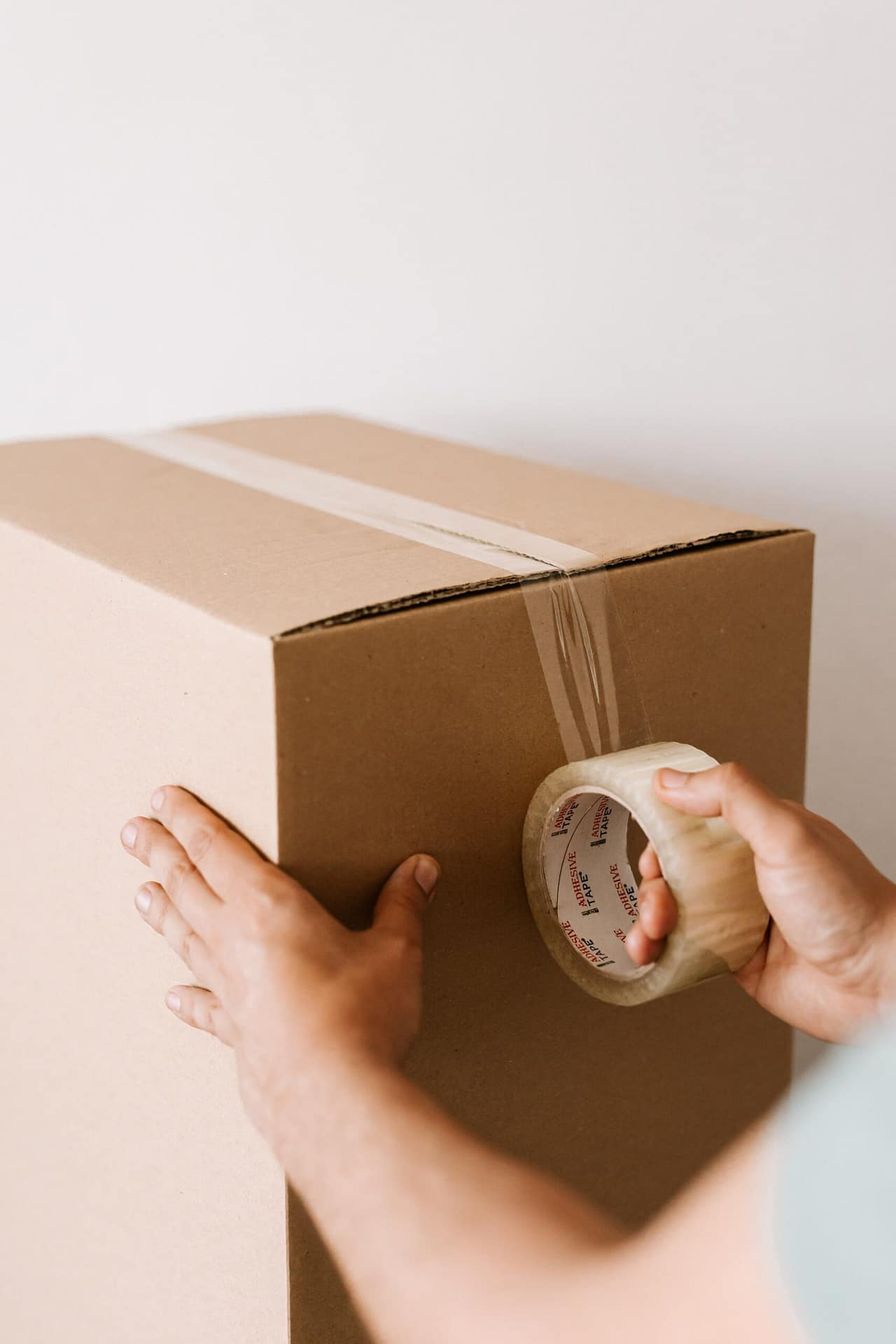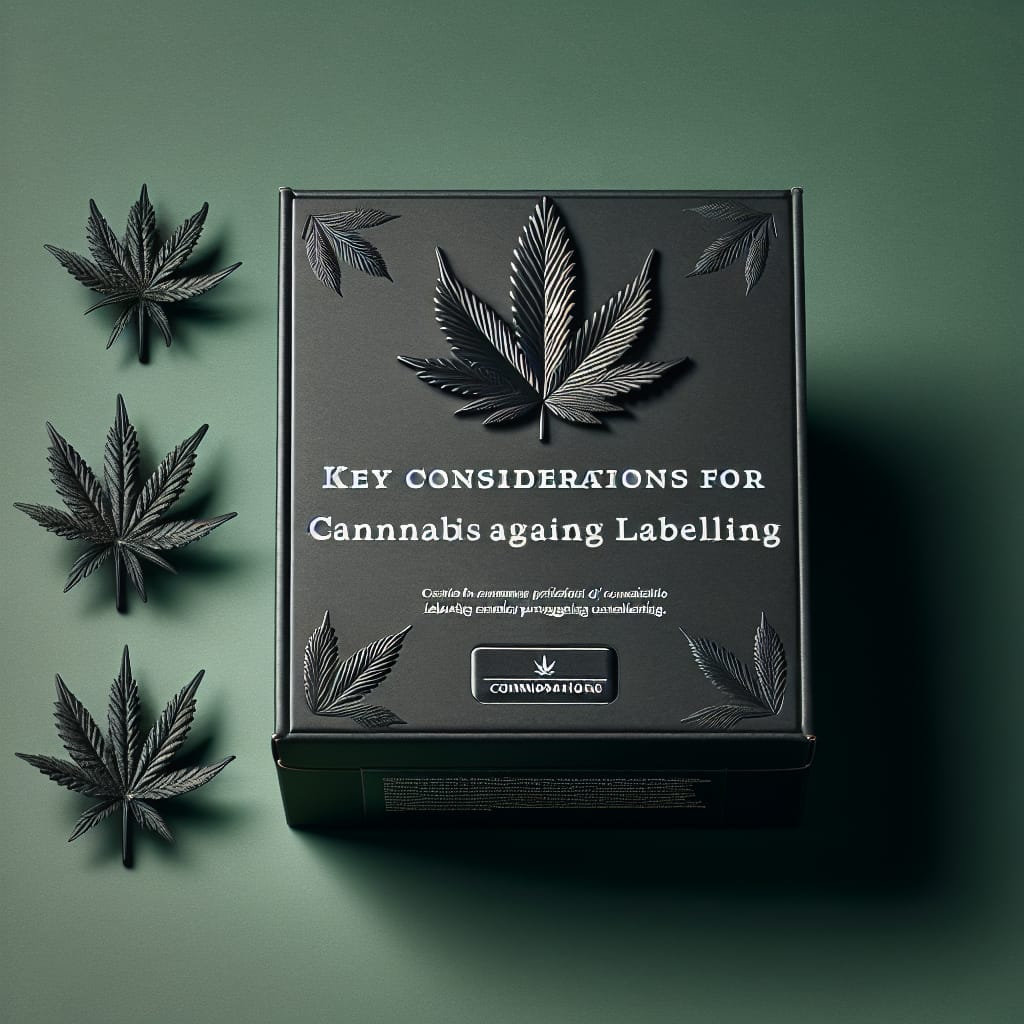So you’ve finally decided to enter the cannabis industry, and you’re ready to take your product to the market. But before you do, there are some crucial things to keep in mind when it comes to packaging and labeling. In this article, we will explore the key considerations that can make or break the success of your cannabis product. From compliance with regulations to consumer appeal and safety, understanding the importance of proper packaging and labeling is essential. So let’s get started and ensure that your cannabis products stand out on the shelves, while also meeting all the necessary requirements.
Legal requirements
Understanding federal and state regulations
When it comes to packaging and labeling cannabis products, it is crucial to have a thorough understanding of both federal and state regulations. Federal laws regarding cannabis are constantly evolving, and it is essential to stay up to date with any changes that may occur. Additionally, each state may have its own specific requirements for packaging and labeling, so it is important to become familiar with the regulations in the states where you plan to distribute your products.
Complying with packaging and labeling laws
Compliance with packaging and labeling laws is non-negotiable in the cannabis industry. Failure to follow these regulations can result in severe penalties, including fines and even the suspension or revocation of your license. Some common requirements include child-resistant packaging, accurate labeling of product contents and potency, and warnings regarding the potential health risks associated with cannabis consumption. By diligently adhering to these laws, you not only protect your business from legal consequences but also ensure the safety of consumers.
Importance of staying updated on changing regulations
As mentioned earlier, regulations surrounding cannabis are constantly changing. New laws may be passed at the federal or state level, and it is crucial to stay informed about these changes. This requires regularly checking for updates on legislation and regulations that pertain to packaging and labeling. Ignorance of the law is not a valid excuse for non-compliance, so it is vital to make it a priority to stay updated and ensure your packaging and labeling practices are always in line with the most current regulations.
Product protection
Choosing the right packaging materials
Selecting the right packaging materials for your cannabis products is essential for preserving their quality and ensuring they reach consumers in the best possible condition. Factors to consider include the product’s sensitivity to light, air, and moisture. For instance, cannabis flower may require containers that are opaque and airtight to protect against exposure to light and air, while edibles may necessitate moisture-resistant packaging to prevent spoilage. Properly assessing your product’s specific needs will help you make informed decisions about the packaging materials that will best protect the quality and potency of your cannabis products.
Ensuring child-resistant packaging
Child-resistant packaging is a legal requirement for many cannabis products, particularly those that could be appealing or harmful to children. It is crucial to choose packaging that meets these requirements and undergoes appropriate testing to ensure its effectiveness. Child-resistant packaging typically requires special closures or mechanisms that make it difficult for young children to open. By implementing this type of packaging, you not only comply with the law but also prioritize the safety of children who may come into contact with your products.
Protecting the product from light, air, and moisture
Cannabis products can be sensitive to elements such as light, air, and moisture, all of which can significantly degrade the product’s quality and potency. To protect against these factors, it is important to choose packaging that provides adequate barriers. Opaque containers can prevent exposure to light, airtight packaging can limit air transfer, and moisture-resistant materials can safeguard against humidity and water damage. Taking measures to protect your products from these potential hazards will help ensure their longevity and maintain their efficacy.
Informational requirements
Including required warning statements
When it comes to cannabis packaging and labeling, including required warning statements is of utmost importance. These warnings inform consumers about the potential risks associated with cannabis consumption and ensure they are making informed decisions. Common warning statements include information about the psychoactive effects of cannabis, the dangers of driving under the influence, and the potential health risks for pregnant or breastfeeding individuals. Including these statements prominently on packaging is crucial for both legal compliance and consumer safety.
Listing product contents and potency
Clearly and accurately listing the contents and potency of your cannabis products is vital for transparency and consumer trust. This information allows consumers to make informed choices about the products they purchase and consume. Including the cannabinoid profile, THC and CBD levels, as well as any other active ingredients, helps consumers understand the potential effects and benefits of the product. By providing this information, you demonstrate your commitment to transparency and build trust with your customers.
Including dosage instructions and recommended use
Providing dosage instructions and recommended use on your cannabis product packaging is crucial for ensuring safe and responsible consumption. This information helps consumers understand how much of the product to take and how often, reducing the risk of potential harm or adverse effects. Dosage instructions should be clear, concise, and tailored to the specific product. Additionally, it is essential to include any precautions or contraindications to ensure consumers are well-informed about potential risks and interactions.
Branding and marketing
Designing attractive and memorable packaging
In a crowded marketplace, designing packaging that stands out is key to capturing consumers’ attention. Your packaging should be visually appealing, eye-catching, and align with the overall branding of your products. Consider elements such as color schemes, typography, and graphics that reflect the identity of your brand. Creating packaging that is aesthetically pleasing and visually memorable will help differentiate your products from competitors and leave a lasting impression on consumers.
Balancing branding with regulatory requirements
While branding is essential for creating a distinct identity for your cannabis products, it is important to strike a balance between branding and regulatory requirements. The information and warnings required by law should take precedence over branding elements to ensure compliance. However, there are still creative ways to incorporate branding within the regulatory framework. By working closely with packaging designers and legal experts, you can develop packaging that effectively showcases your brand while meeting all necessary regulatory obligations.
Differentiating your products from the competition
With the cannabis industry experiencing significant growth, competition among brands is fierce. To stand out from the competition, it is crucial to find unique ways to differentiate your products. This can be achieved through innovative packaging designs, creative labeling, or novel product features. Understanding your target audience and what they value can help guide your differentiation strategy. By offering something distinct, you can attract consumers who are looking for a unique experience and establish a competitive edge in the market.
Sustainability
Choosing eco-friendly packaging materials
In today’s environmentally conscious world, choosing eco-friendly packaging materials is not only beneficial for the planet but also a way to appeal to environmentally conscious consumers. Consider utilizing materials that are recyclable, biodegradable, or made from renewable resources. This shows a commitment to sustainability and can be a strong selling point for consumers who prioritize environmentally responsible products. Additionally, sustainable packaging can help reduce waste and lessen the overall environmental impact of your cannabis products.
Reducing unnecessary packaging
Minimizing unnecessary packaging is another essential aspect of sustainable packaging practices. Over-packaging not only contributes to unnecessary waste but can also give the impression of excessive and wasteful consumption. By employing thoughtful and minimalistic packaging designs, you can reduce the amount of packaging material used while still adequately protecting your products. This demonstrates a commitment to sustainability and can resonate with consumers who value environmentally conscious choices.
Implementing recycling programs
To further enhance your sustainability efforts, consider implementing recycling programs for your packaging materials. Provide clear instructions to consumers on how to properly dispose of or recycle the packaging after use. Additionally, consider using packaging materials that are already widely accepted in recycling programs. By actively promoting and supporting recycling initiatives, you demonstrate a commitment to environmental stewardship and give consumers an easy way to participate in sustainable practices.
Product visibility
Ensuring clear product visibility
Optimizing product visibility is essential for showcasing the quality and appeal of your cannabis products. Consumers want to see what they are purchasing, especially when it comes to cannabis, where factors such as color, texture, and overall appearance play a significant role. Design packaging that allows consumers to easily view and evaluate the product, whether through clear sections or window displays. By ensuring clear product visibility, you enhance the overall consumer experience and build trust in the quality of your products.
Balancing transparency with child-resistant requirements
While it is crucial to prioritize product visibility, it is equally important to balance this with child-resistant packaging requirements. Child-resistant packaging often involves opaque materials or mechanisms that can limit the visibility of the product. Striking a balance between the two is essential. Consider incorporating clear sections or windows into the packaging design that allow consumers to see the product while maintaining the required child-resistant features. By achieving this balance, you can provide both visibility and safety for consumers.
Strategies for showcasing the product’s quality
Packaging should not only protect a product but also serve as a platform for showcasing its quality and unique characteristics. Consider innovative design elements that highlight the product’s attributes, such as embossing, foil stamping, or unique textures. Including high-quality product images or detailed descriptions can also help convey the product’s quality to consumers. By effectively showcasing the product’s quality through packaging, you can influence consumer perception and encourage purchase decisions.
Labeling design
Including required information on the label
Labeling plays a critical role in informing consumers about your cannabis products. Ensure that all required information is clearly and legibly included on the label. This includes the product’s name, ingredients, net weight, and the name and contact information of the manufacturer or distributor. It is important to consult relevant regulations to determine the specific labeling requirements that apply to your products. By including all necessary information, you provide consumers with transparency and comply with legal obligations.
Designing easy-to-read labels
In addition to including required information, it is crucial to design labels that are easy to read. Choose font sizes and colors that make the text clear and legible, even for consumers with visual impairments. Avoid using overly decorative fonts that may be difficult to read or confuse consumers. The information on the label should be readily understandable, allowing consumers to quickly and accurately gather the necessary information about the product. By prioritizing readability, you enhance the overall user experience and ensure consumers can access the information they need.
Choosing appropriate font sizes and colors
When designing labels, font sizes and colors play an important role in enhancing readability and legibility. Select fonts that are clear and easily readable, even at smaller sizes. Consider using bold or larger fonts for important information such as dosage instructions or warnings to draw attention to them. Additionally, choose font colors with sufficient contrast against the label background to ensure readability, especially for individuals with visual impairments. By making thoughtful choices regarding font sizes and colors, you create labels that are accessible to a wide range of consumers.
Product differentiation
Using distinctive packaging shapes or colors
To differentiate your cannabis products in the marketplace, consider using distinctive packaging shapes or colors. Unique shapes can help your products stand out on the shelves and catch the attention of consumers. Likewise, choosing bold or unconventional color schemes can create a memorable visual impact. However, it is important to ensure that the packaging is still practical and functional for the product. By embracing distinctive shapes or colors, you can create a memorable and eye-catching brand experience for consumers.
Incorporating unique label designs
In addition to the packaging itself, label designs can play a significant role in product differentiation. Consider incorporating unique and creative label designs that reflect your brand’s identity or story. This could involve using eye-catching graphics, patterns, or illustrations that resonate with your target audience. Conveying a sense of creativity and uniqueness through label designs can make a lasting impact and help differentiate your products from competitors.
Creating a memorable brand experience
Product differentiation is not just about the physical packaging but also about the overall brand experience you create for consumers. Think beyond just the visual aspects and consider how your packaging and labeling can contribute to a memorable brand experience. This could involve incorporating interactive elements, such as QR codes or augmented reality features, that engage consumers and provide additional information or entertainment. By creating a unique and memorable brand experience, you can foster customer loyalty and stand out in a crowded marketplace.
Consumer accessibility
Designing labels for readability
When designing labels, accessibility should be a primary consideration. Ensure that the labels are designed with readability in mind, taking into account consumers with visual impairments or reading difficulties. Use clear and legible fonts in appropriate sizes, and avoid overcrowding the label with excessive information or cluttered graphics. By prioritizing readability, you ensure that all consumers, regardless of their visual abilities, can easily access and understand the information on the label.
Using clear and concise language
In addition to designing labels for readability, it is crucial to use clear and concise language. Avoid technical jargon or complex terminology that may confuse or alienate consumers. Instead, use simple and straightforward language that clearly communicates the product’s features, benefits, and directions for use. Providing information in a concise manner makes it easier for consumers to understand and follow, enhancing the overall user experience and ensuring accessibility for a wide range of consumers.
Considering accessibility requirements for visually impaired consumers
Visually impaired consumers have unique accessibility needs when it comes to packaging and labeling. Consider incorporating features that cater specifically to this audience, such as braille or tactile elements. Braille labels can provide important information to visually impaired consumers, ensuring that they can access and understand the content on the packaging. Additionally, using tactile elements, such as embossed text or icons, can provide a tactile reference for individuals with visual impairments. By considering the accessibility requirements of visually impaired consumers, you demonstrate inclusivity and ensure equal access to your products.
Quality control
Implementing rigorous quality control processes
Maintaining quality control is essential for ensuring consistency and safety in your cannabis products. Implementing rigorous quality control processes involves regularly and systematically checking your packaging and labeling for compliance, accuracy, and functionality. This includes verifying that all required information is included, labels are properly applied, and packaging materials meet the necessary standards. By consistently monitoring and reviewing your packaging and labeling processes, you can mitigate risks associated with non-compliance, errors, or product defects.
Ensuring accurate labeling and packaging
Accuracy in labeling and packaging is paramount for consumer safety and legal compliance. All information, from dosage instructions to ingredient lists, must be clearly and accurately stated. Labels should be properly affixed to the packaging, ensuring they are secure and legible. It is also essential to verify that the correct packaging is used for each product to prevent mix-ups or misinformation. By conducting thorough checks and reviews, you can ensure that your labeling and packaging are accurate, minimizing the potential for errors or confusion.
Avoiding cross-contamination and product deterioration
In the cannabis industry, preventing cross-contamination and product deterioration is crucial. This requires implementing strict protocols to prevent contamination during the packaging and labeling process. Proper cleaning and sanitization of equipment, as well as adherence to hygiene practices, help minimize the risk of cross-contamination. Additionally, proper storage and handling procedures should be followed to protect the product from deterioration caused by factors such as temperature, humidity, or exposure to light. By prioritizing quality control measures, you safeguard the integrity and safety of your cannabis products.
In conclusion, packaging and labeling play a fundamental role in the cannabis industry. Understanding and complying with legal requirements, protecting the product, providing informative labeling, implementing effective branding and marketing strategies, prioritizing sustainability, ensuring product visibility, designing accessible labels, differentiating products, and maintaining rigorous quality control are all key considerations that can greatly impact the success and reputation of your cannabis business. By giving careful thought to each of these aspects, you can create packaging and labeling that not only meet regulatory obligations but also attract consumers, build trust, and convey the quality and value of your cannabis products.




